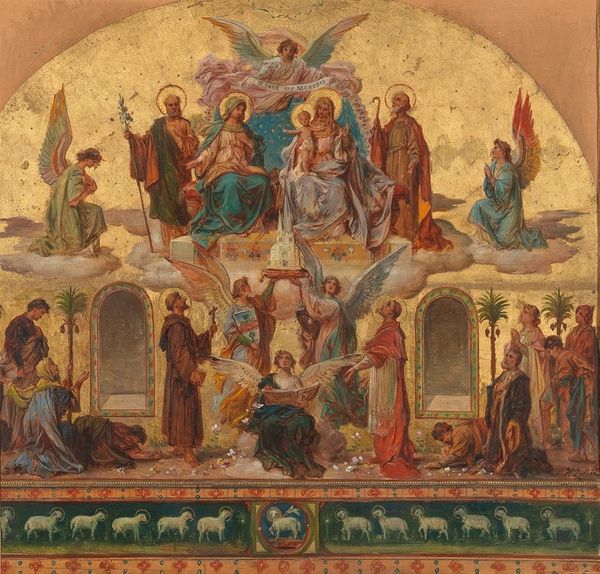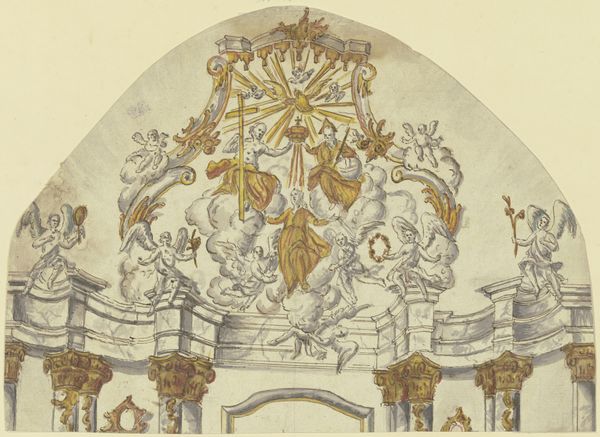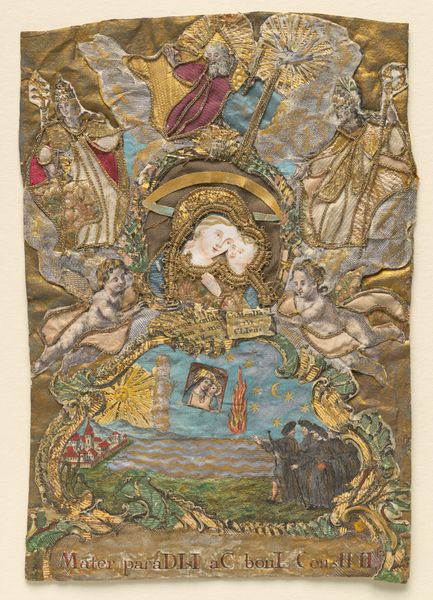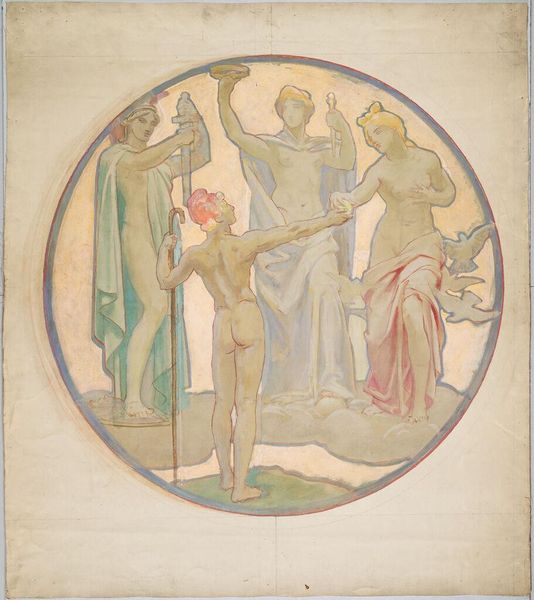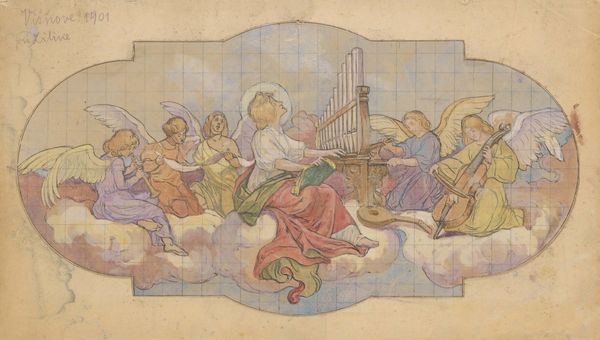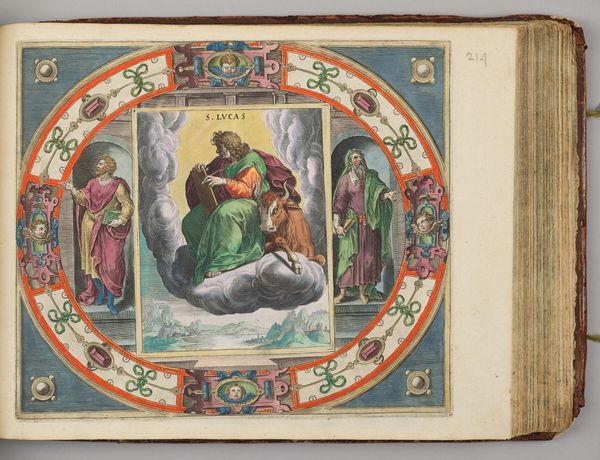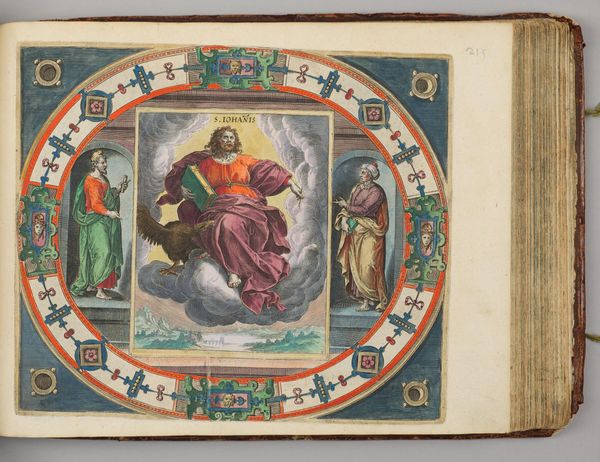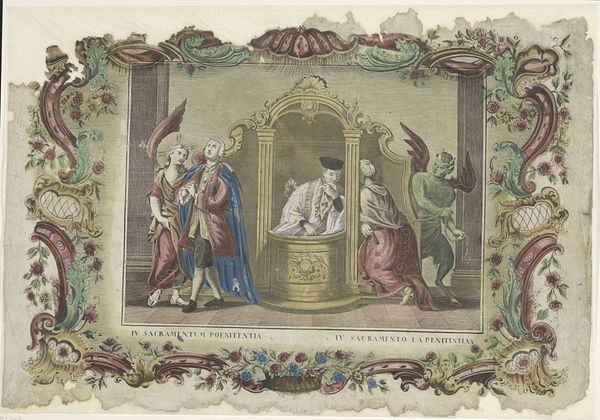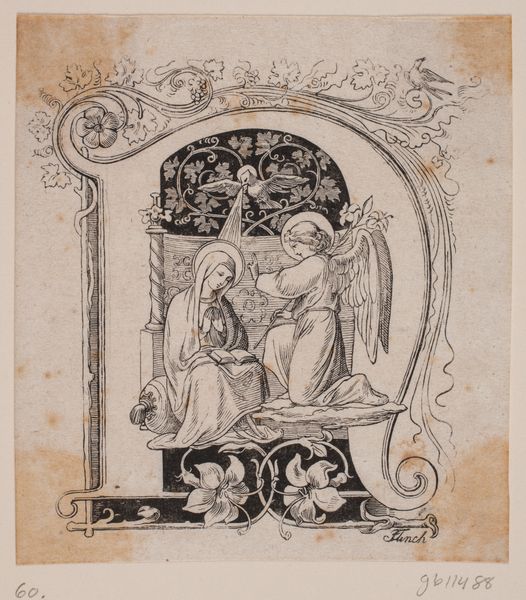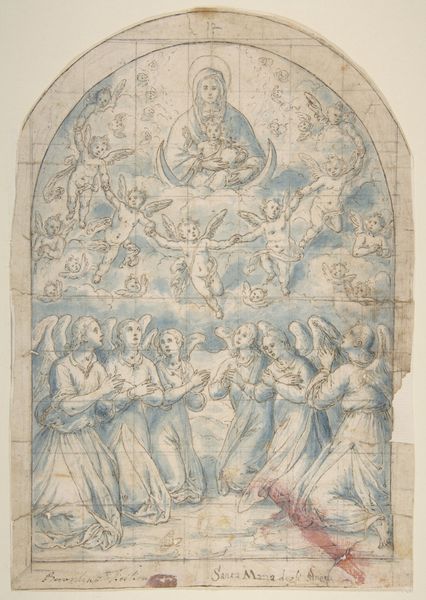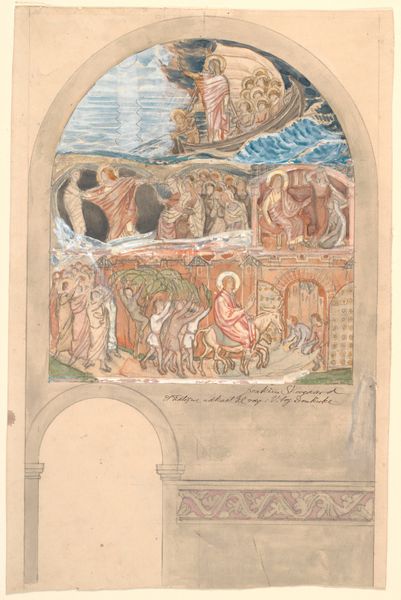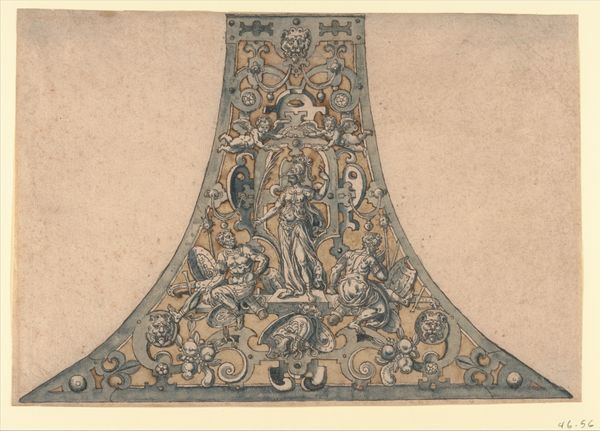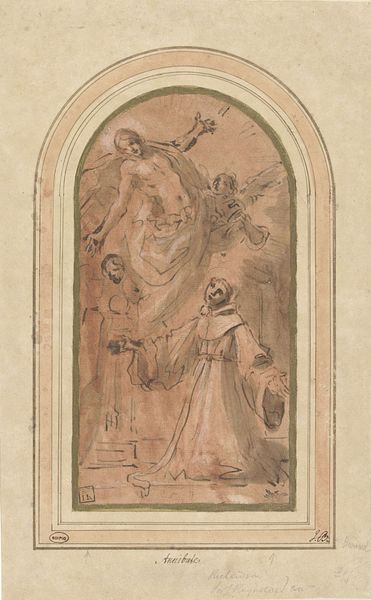
painting, watercolor, mural
#
portrait
#
water colours
#
ink painting
#
painting
#
figuration
#
watercolor
#
coloured pencil
#
history-painting
#
italian-renaissance
#
mural
#
watercolor
Copyright: Public Domain: Artvee
Curator: What a find! Here we have Jozef Hanula’s 1901 watercolor and colored pencil mural design, “Madonna and Child, Mural Design of a Church in Višňové.” Imagine this adorning the ceiling of a church—that gentle arc framing a divine scene. What are your initial thoughts? Editor: It feels like stepping into a dream, a really delicate one at that. The colors are so muted and soft, it has a nostalgic feel. Like looking at a cherished memory through layers of time. The overall impression is devotional, yet approachable. It is as if divine authority is being mixed with approachable domesticity, which might resonate for a congregation. Curator: That approachability is interesting. The Italian Renaissance influence is clear, in its composition with figures arranged symmetrically, like those frescoes in Florence, all gazes directing to Mary and the Christ child—yet, Hanula's palette shifts it away from high drama. This isn't a fresco demanding awe; it invites a quiet reverence, wouldn't you say? Editor: Precisely! Think of the Madonna figure herself, centrally located above the decorated doorway—an icon of welcome and protection. This "gate" can be read on a few levels – as entry to sacred space, but equally mirroring Mary as the “gate” through which the divine entered the world. Even the adoring angels, while standard, have softer expressions, kinder eyes. Curator: A visual theology then, told in soft watercolors! And consider the choice of medium itself. Mural designs were of course functional, aiming for permanence. But the delicate watercolours render the scene fragile. There's an inherent contradiction: divine eternity depicted with impermanent materials. Was this choice intended to express the temporality of terrestrial life, or to express faith and humility of spirit, would you suggest? Editor: I would go with humility of spirit. While it’s just a sketch, there's a lightness here. The wispy clouds and the slightly melancholic expressions. Those features create an atmosphere of vulnerability. That doorway reminds us of transitions, openings, a passing from one world into another—emphasizing continuous movement and reevaluation within faith, rather than stoic resolution. Curator: A fascinating duality captured so subtly. Jozef Hanula offers a vision that isn't just divinely inspired; it’s deeply, intimately human. It resonates on so many symbolic and interpretive levels. Editor: Exactly! Looking closer is like peeling away the layers of a story, one where reverence, emotion, and the human condition entwine so beautifully.
Comments
No comments
Be the first to comment and join the conversation on the ultimate creative platform.
